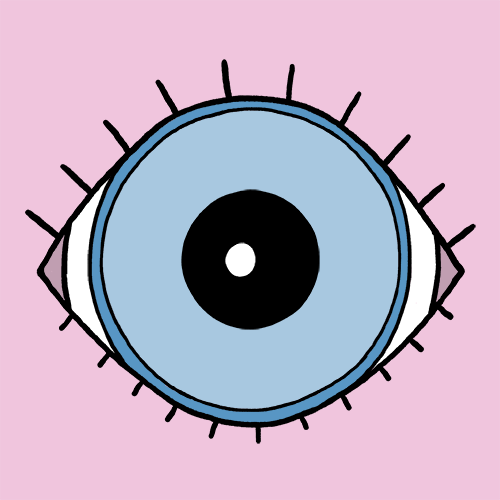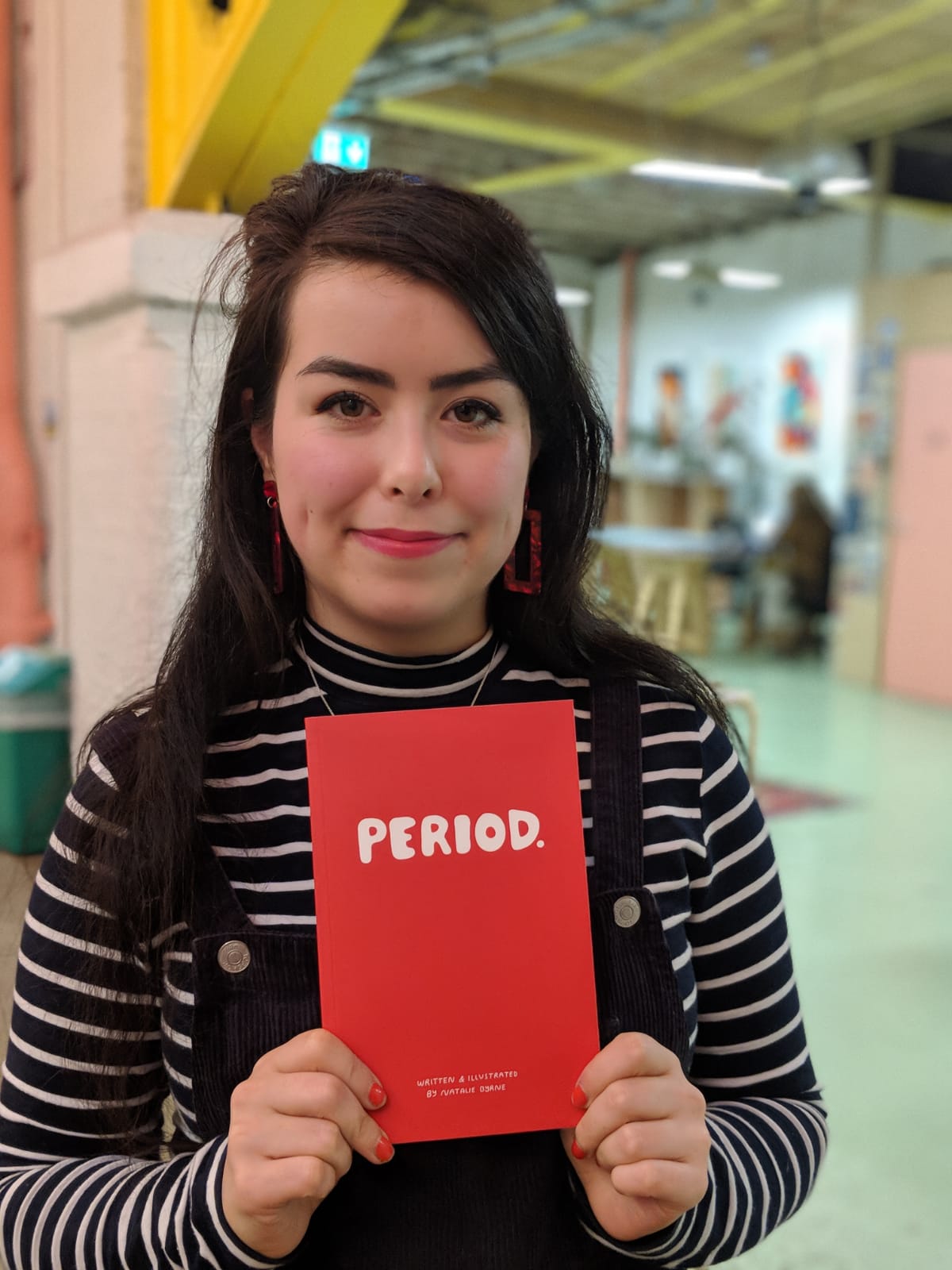Ep 20: What does it take to self publish your own book with Natalie Byrne
There’s nothing quite like the look of a good book cover, and that’s not even the best part. Who knows what you’ll find once you flip that baby open. A god given gift I tell you. Or is it? Cue today’s episode with Natalie Byrne on how to self-publish your own book.
Having the confidence to actually start showcasing your work is an everyday struggle for many artists. In what ways has this been prevalent in your own life?
You totally hit the nail on the head! Confidence has been one of my biggest issues. I am a shy person, networking doesn’t come naturally to me, and so in that regard, Instagram has really helped me get my work out there.
As much as social media gets a bad rep, it’s still allowed for a space in which introverts, or those who don’t necessarily do well in real-time, to build community, connect, and to not feel so isolated. Especially in my line of work!
Once I started to receive feedback on what I was putting out there, that’s when my confidence started to grow a little too.
Exactly! I am currently in the throes of trying to make this retail space work for when we move out to Michigan, and there’s just so much going on, that when I do receive those DM’s where people voice their gratification towards the work that I am doing, it just makes my day!
Taking note of that, I always make sure to allocate a little time here and there to comment on other people’s work. Supporting each other, and rising together rather than sitting in that negative state of comparison and lack.
You recently shared a post from the Women of Illustration instagram where I touched on finding your “voice” rather than “style”. It got bashed quite a bit, but I think the overall engagement was really just a reflection of something we all needed to hear. What are your thoughts on this?
You’re right, that day I needed to hear it. You know, there’s empty work that just looks pretty, and then there’s work that’s been created with a purpose and has meaning to it. It may not always be what society deems to be of a “high caliber”, but skill set aside, it truly comes back to the essence of a piece.
Especially in coming from a graphic design background. There’s a set design brief, it’s commercial, you have a demographic you’re targeting; so am I speaking to these specificities?
Yeah you definitely can’t turn around to your art director and come from the perspective of, “oh this one just looks better”.
That’s why I think there was such a contrast to seeing the audience’s response on my personal instagram vs that of Women of Illustration’s instagram. There’s a definite difference in one’s systematic approach to creating, what’s being valued within one’s own creative process, and how this reflects on an industry-level.
It also really calls upon who’s being allowed into this space too. Is your skill set of a certain level to be able to call yourself an “artist”?
That’s why I so align with your work. Skillfully executed, but leaning less so on catering towards aesthetically pleasing the eye, it’s really about the message. You create around whatever it is that you’re saying.
But, I want to hear it from you. How would you describe your style of illustration, what you do, and how you got published recently?
Simple, colorful, feminist. I do client work, book royalties, I run a shop, public speaking, and editorial writing.
I worked with an independent publisher, Break The Habit. There’s was a lot of alone time that went into creating the book, and then all of sudden it’s out there. From it being such a solo-journey-kind-of-a-thing to sharing it with many is wild to say the least.
It was covered by The Huffington Post and the BBC, and I was on the radio. The book exceeded in terms of what a first-time author of a nonfiction book sells. It was released November 1st 2018, and was sold out before Christmas!
We did a run of a thousand books, and people were buying like 10 copies! I honestly expected a lot of negative feedback. It’s about menstrual cycles, blood is shown; you know, all the really taboo topics people like to point fingers at. So to see it even being bought in Brazil was mind blowing.
So, you knocked publicity out of the ballpark, but in terms of what you made off of the book, did you get a good royalty rate?
I got a rate of around 10%. Because it was independent, there was a back and forth between my receiving an advance, whilst also getting the book funded. I had pre-established relationships with several women-run companies working in the production of tampons, pads, menstrual cups and period underwears (all of which were ethically and sustainably made), and pitched them the idea of featuring them in the book in return for help covering the cost of production whilst also being paid a percentage myself. All in all, I struck a pretty good deal.
And where did the idea to cover menstrual cycles come from?
I was interning, working in retail, then Brexit happened. I just spiraled into a depression, and releasing my emotions via illustrations, and sharing them on Instagram was my outlet. I had studied graphic design, but had never really seriously took to illustrating as I do now.
To begin with, I’d join a bunch of challenges like Inktober. There was a specific one where I made a list of the things that intimidated me to speak about, my period being one of them. It was terrifying, and then this dialogue started happening. People from university, even all the way back to my preschool days, reached out and thanked me for my vulnerability.
Shortly afterwards, this charity Bloody Good Period reached out asking if they could regram the illustration, and through them I found that, what is essentially period poverty, to be very prevalent within our own country. Asylum seekers, refugees, and our own citizens alike not having access to what should just be the necessities with regards to having a safe and hygienic menstrual cycle; don’t even get me started on the lack of education surrounding these topics! So I started illustrating for them.
From here, I partook in the “Free Periods” protest helmed by Amika George in rallying for the government to provide free menstrual supplies so as to address the situation of period poverty, and the fact that so many girls were foregoing their education because they didn’t have the means to properly deal with their cycle on a daily basis.
I remember one of the speakers saying, “there isn’t enough education, or even the tools for this education”, and that really hit home. I went home and started scouring libraries for at least something a little more extensive on the topic rather than just the simple one-pager I found right before a two page spread on wet dreams. Nothing. There was a obviously a need for this book. And then I started asking myself, if someone does make this book, is it going to be in the way that I would want it? So I decided to make a zine.
This then led to my being asked by Break The Habit to be featured in an upcoming exhibition for the release of their first book “100 Women I Know” on redefining rape culture. It sparked a deeper dialogue in which I mentioned what I was working on, and their eyes just sort of lit up.
And what’s interesting is that, at the time, I hadn’t planned in approaching the book as being the writer for it too. I had about six thousand words worth of notes, and the publishers pretty much said that as children were the demographic, it was good to go.
I think this serves as a perfect example in not falling for the shiny objects. Bigger doesn’t necessarily mean better. I came out the other end of my publishing deal with Penguin Random House completely screwed over in terms of the rights and royalties, and you’ve come out of this experience with meaningful relationships, and a product that you and the people involved truly align with and stand behind.
That’s definitely something I was initially approached with a lot. “Take the book to a bigger publisher”. But in having met Break The Habit’s founders, Becca and Kez, seeing them in the pits right there alongside us in doing the activist work, how deeply these causes were to them; it just felt right. Knowing what I was comfortable with too, and that if placed in a more corporate setting, potentially surrounded by male figures which is the exact opposite of whom the book is intended for, just wouldn’t be the space with which I wanted to bring it into the world with.
And these people have only served further in really being a community for me, and extend into so many aspects of my life outside of my business and the book deal.
Let’s touch on the marketing of the book. Give me all the details!?
I kept a super transparent dialogue going on social media whilst making the book, so a lot of behind the scenes. And I think it really comes down to this time that we’re in too. What topics do we need to be discussing, what can we no longer afford to shove under the rug, or turn a blind eye to? People are stepping up to the plate and want to help. Waterstones reached out after seeing what I was doing via social media and asked if I wanted to host the launch at one of their their stores. We sent out some material to Refinery29 and a few other platforms that speak to these issues. Yes, it was a topic of discussion within the media, but it’s not trendy, it’s necessary.
What’s your advice to artists looking to self-publish a book of their own?
Think about the person you’re writing to. For me, it was my younger self. I laser focused on all the ways in which I was confronted with my period and didn’t know what to do.
I pushed aside all outside noise, the fear, anxieties, doubts, my very conservative parents, and just kept her in my mind’s eye the whole time and wrote. In having done so, so many people have reached out saying that it felt like it had been written for them.










